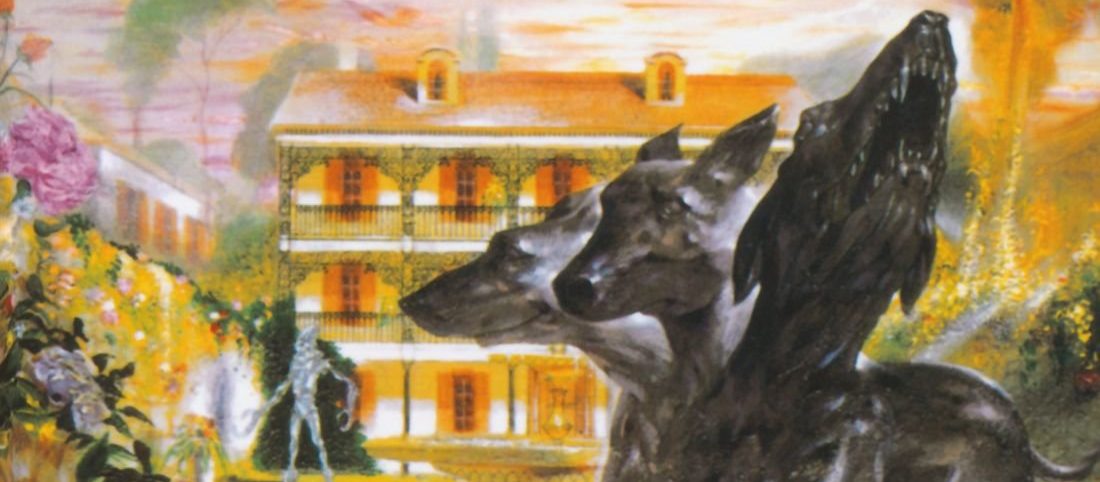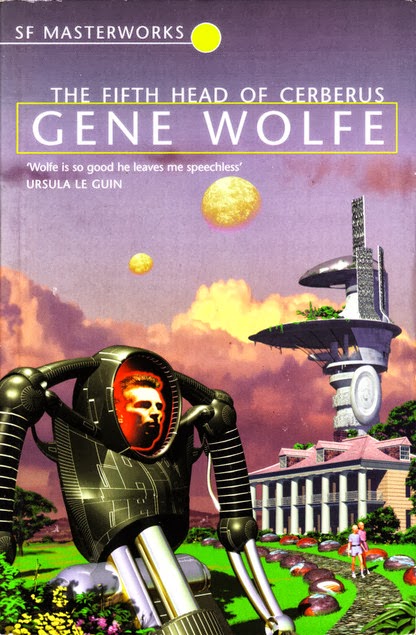

“Each of us finds his way, his place; we rattle around the universe until everything fits; this is life; this is science, or something better than science.”
Gene Wolfe’s debut novel (his actual first novel, Operation Ares, was retrospectively disregarded by both the author and his fans) is actually not a novel at all, but three interconnected novellas, sharing characters and themes, but told in varying styles and from different viewpoints. The stories—especially the first—unfold like sustained netherworld nightmares. Not the kind that frightens you to wakefulness, but the kind that vaguely tickles your subconscious and leaves you with an unshakeable sense that something unusual took place.1 It is a wonderful bit of literary science fiction in which narrative is not an end, but a means to explore themes of colonialism, racism, memory, childhood, identity, etc.—many of which Wolfe would explore throughout his career in works like Peace and The Book of the New Sun and its sequels. Incredibly concise, its craftiness and obfuscation of its narrative leaves the reader with a series of impressions rather than a blunt narrative thrust that ends when the book does. Like much of Wolfe’s work, The Fifth Head of Cerberus has that wonderfully hard to pin down quality that allows it to live on in your mind long after you turn the last page.
The Fifth Head of Cerberus
The first story bears the same title as the novella. It’s a gothic horror tale of a young boy who is raised in a brothel situated at 666 Saltimbanque St. in Port Mimizon on the settler planet Saint Croix, which revolves around the same sun as its twin, Saint Anne. Like The Book of the New Sun, it is unreliably narrated by an adult dredging his memory. Throughout the story, Wolfe works to obscure what is actually occurring, which makes for infuriating reading at times, but also a great sense of wonder and discovery as new layers unfold and hidden plot threads bubble up to the surface.
In his flashback narration, we are introduced to a colorful cast of characters: his brother David; their tutor Mr. Million (whose physical description comes in bits and pieces until it is finally revealed that he is a robot whose mind is based on an unbounded scan of the brain of the boys’ great-grandfather), who takes them to the library and the slave market and is generally responsible for their upbringing; their Aunt Jeannine who levitates instead of walking or standing, and is also the renowned anthropologist named Aubrey Veil; and the mad scientist and master of the brothel Maitre, who is the boys’ father.
One night, Maitre—who has been a distant figure in the boy’s life thus far—has the boy brought to his office where he subjects him to a barrage of psychological tests, drug injections, and hypnosis. At the end of the session, he christens the boy “Number 5,” after which the nighttime tests become a regular occurrence.
As Number 5’s perception of reality becomes uncertain, he meets a mysterious anthropologist from earth named John Marsch who is looking for the originator of Veil’s Hypothesis—the theory that the native inhabitants of Saint Anne (“abos”) could mimic human settlers so well that they actually killed them all and have completely replaced them. John Marsch is the central character of the overarching story that links the three novellas to one another, though none of the stories are told from his perspective.
When Number 5, David, and a young girl break into a slave trader’s warehouse to steal money for a live drama they wish to perform (a lot happens in this short story), they encounter an extra-limbed slave whose face resembles that of Number 5, leading to a number of troubling thoughts. With the help of Marsch, Number 5 discovers that he is a clone of Maitre, who is undertaking a lifelong study to discover the reason for his family’s social and intellectual decline.
“A Story,” by John V. Marsch
The second section is the most difficult to read as it is written in a harsh style and told from the perspective of an aboriginal (or so we are led to believe) on the world of Saint Anne prior to colonization. In an age of primitive technology, the story is conveyed as a mixture of hallucination, dream, and reality as various tribes contend for dominance and the lives of separated twins Sandwalker and Eastwind come together again. During their encounter the first Terran settlers arrive on Saint Anne.
It’s a mythic text, and a neat exercise in style; but for me it was the least compelling of the three stories, serving mostly to flesh out the background for the other two stories. The dreamlike presentation is intriguing, but the incredibly unreliable narration, alien mindset, and narrative ambiguity—techniques that Wolfe generally executes very well, and indeed are often cited as what sets him apart from other authors of the genre—are laid on overthick. Where exploring the mysterious worlds Wolfe creates is generally a pleasurable experience, here it becomes something of a chore to decipher what’s occurring; not necessarily to come to the “correct” interpretation (there probably isn’t one, intentionally), but to come to a cohesive one at all.
(The aboriginals of Wolfe’s story have a view of the dream world that reminded me of the Aboriginal Australian concept of Dreamtime, which is explored in Australian director Peter Weir’s 1977 film The Last Wave.)
V.R.T.
The last of the stories is not really a story at all; instead, we are presented with a series of disparate source materials—field journals, interrogation records, prison diary entries—that eventually sketch a disjointed, non-linear narrative for us. It’s the most experimental and ambitious of the three selections and is difficult to unravel and piece back together in a logical fashion. John Marsch, the anthropologist who appeared in the first story, and “wrote” the second one, has been imprisoned for espionage and assassination, and his file is being reviewed. The story overlaps with the first one, filling in details of the “abos” as Marsch explores Saint Anne. Hiring a half-aboriginal boy to guide him, Marsch travels deep into the countryside searching for full-blooded natives. At one point, the tone of Marsch’s journal entries changes, suggesting that Veil’s Hypothesis may be true.
Taken as a whole, the novel is thematically diverse. Perhaps the most interesting concept that it confronts is the idea of our personal identity—how we conceive of ourselves, and our place in the world, in our families, in history, in the cosmos. The Fifth Head of Cerberus is reminiscent of several famous philosophical thought experiments that are meant to prompt thought in this area. The second most interesting idea—only slightly less compelling because it involves alien lifeforms—is the notion that the aboriginals may have killed the settlers, began mimicking them to avoid suspicion, and then gradually lost the memories of their origins. Or, maybe the humans slaughtered the abos and everything is as it appears. Wolfe leaves it open, which he does most of the time.
But the author is not trying to convince us of anything. He isn’t investigating these issues—identity, colonization, cloning, etc.—he’s not looking at them scientifically or systematically, so much as much as he is toying with them, using them to shake up our preconceptions and letting the eerie mysteries float before us without offering any of his own conclusions. It may be hard to genuinely connect with the material on an emotional level due to its cold mode of storytelling, but Wolfe’s ability to effectively unsettle and the book’s unique vision make it terrifically memorable.
Wolfe diligently writes in such a way that the reader can miss large chunks of what’s happening if they are not persistent in reading between the lines and following the subtle nuances of the writing. At times it can actually feel as if he is simply loading the reader up with a bunch of hints about the story without plainly telling us anything. His writing is simultaneously florid yet concise in its storytelling, while maintaining a certain poeticism and employing an expansive lexicon. All this makes The Fifth Head of Cerberus a challenging read. It requires attention and persistence, maybe some rereading of certain passages. For fans of straight-up pulp sci-fi, this may be impenetrable, but it might appeal to readers who generally scoff at the genre.
1. This happens to me about once a month. For instance, as an adult, I dreamed I was a child (though not myself as a child; just a child) riding a tricycle backwards up a hill. Flanking me on both sides were a half dozen exact clones of “myself,” smiling hideously at me. All motion abruptly ceased and some kind of narrator said, “Here is the final utterance, that the owner of this heart is dead and has been for some time.”
Sources:
Wright, Peter. “Confounding the Skin and the Mask: Gene Wolfe’s The Fifth Head of Cerberus and the Politics of Ambiguity”. Ultan’s Library. 15 January 2002.